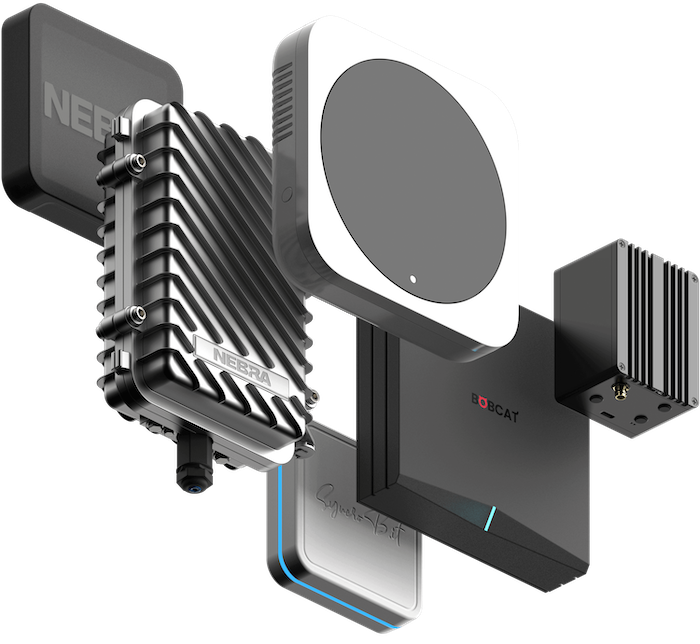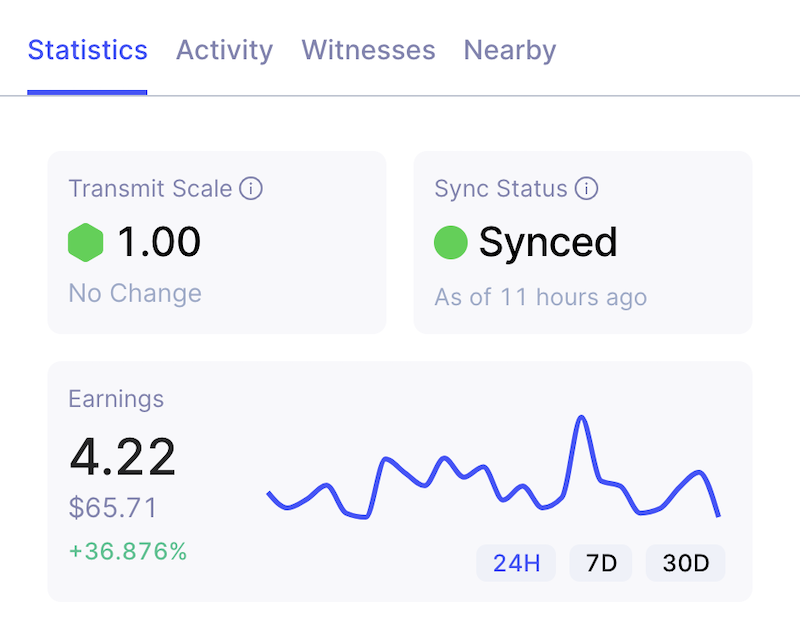

If you're starting in an area without existing hotspots, tell your friends and neighbors to get on board. That said, you will make considerably more if you have witnesses. Do I need witnesses to have high rewards? Only hotspots made by approved manufacturers can earn HNT. This was an option early on, but there were problems with people creating fake hotspots. The mobile app allows you to see status for a single or multiple Hotspots. Just make sure it’s always plugged into power and connected to Wi-Fi. The Hotspot runs quietly in the background, creating coverage and routing data. Multiple hotspots in the same location do not achieve this goal, so the mined HNT will be considerably lower than having the same number of hotspots spread across a larger area. The network incentives are specifically designed to encourage broad coverage. Hotspots need to be 900 feet apart from each other in order to receive maximum earnings and provide new coverage. Can I host more than one hotspot in the same location? Please check the security article that Helium released here for more information on the security measures they take to keep your network safe. However, as with all devices connected to the internet (smart TV’s, Alexa’s, computers, phones, etc…) there is some level of inherent risk.


How much of my Internet / Wi-Fi bandwidth will it use?Įxpected bandwidth utilized by devices is 1-5 kb/s (very little). In a city like San Francisco, it will cost you roughly $0.48/month. This is less than a standard LED light bulb. The Hotspot uses a small amount of power, roughly 5W at peak. How much electricity will the hotspot use? In a city like San Francisco, it will cost you less than $.05 per day to run. A good rule of thumb is to provide a minimum distance of 300 to 500 meters between Hotspots though this could vary depending on the environment (in a dense city closer, and in a more rural environment farther). Hotspots should not be deployed too close to one another. How far apart do hotspots need to be placed? Avoid putting the Hotspot in locations where it can’t see the outside world: in basements, in cabinets, behind TVs, metal screens, or ‘cyberglass’ in skyscrapers and things like that. Ideally, your Hotspot has a clear view of the sky. If you have a house or apartment building with multiple floors, aim for the highest floor with a window. Hotspots like to be deployed high up, overlooking wide-open spaces. Being a part of a Consensus Group Where is the ideal location for the hotspot?.By acting as a Witness to a PoC Challenge between nearby hotspots.By initiating PoC Challenges over the internet.When a device sends information over the network using your hotspot.Once set up and connected to the internet, there are 5 ways your hotspot earns (with no additional work from you!): Purchase your own hotspot and earn 100% of your hotspot’s performance. Once this is done, use the Helium Mobile app to finish the setup process. If there’s no Wi-Fi available you can directly plug into an Ethernet port. Just plug it into a power source and connect to Wi-Fi. How do I deploy the hotspot? What are the requirements for running it? See here for a very high performing hotspot. However, there are very well placed hotspots earning over $12,000 per month. At the current price of Helium $15.56, that would be an average of $77.80 per day, $544.60 per week, and $2,178.40 per month. The average hotspot earns around 5 HNT a day. Your Hotspot earns a new cryptocurrency called Helium for providing network services to these devices. Hotspots provide internet connectivity for all sorts of IoT devices: bikes, scooters, temperature sensors, location trackers for pets, elevators, wildfire sensors, and much more. Anyone can use LongFi, which works on existing IoT hardware, to create lots of different products. What devices can use the network?Įverything from tracking scooters, to soil sensors in farms, to tracking the water level of bottles in water coolers. Think of it like a Wi-Fi router, but for devices sending small amounts of data over long ranges like a dog tracker. The network is created through Helium Hotspots which are small hardware devices that connect to wifi in people’s homes and offices and create the large wireless network. Helium is a decentralized wireless network for devices such as location trackers for pets, keychain tiles, e-scooter trackers, e-bike trackers, temperature sensors, elevators, wildfire sensors, etc and are part of what’s usually called the IoT - or the “Internet of Things.” The Helium network is often referred to as The People’s Network but it is not owned by a large corporation like Verizon or Comcast but instead by the people who create it.


 0 kommentar(er)
0 kommentar(er)
